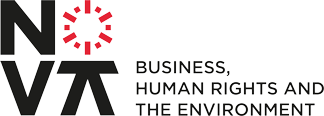This blog post is based on the interventions of Tulika Bansal in the webinar on Business and Children’s Rights organised as part of the First Annual Conference of the Nova Centre on Business, Human Rights and the Environment with the support of PLMJ, the Portuguese Chamber of Commerce and Industry, CEDIS, as well as NOVA 4 The Globe on the 24th of November 2021.
About the author: Tulika Bansal is a senior adviser, human rights and business at the Danish Institute for Human Rights, Denmark’s national human rights institution. For the past 10 years she has worked with the private sector, states and national human rights institutions to promote uptake and implementation of the UN Guiding Principles on Business and Human Rights. In this role she has assessed human and child rights impacts in complex supply chains in various sectors across the globe and has developed and contributed to various tools and methodologies to do this, including on children’s rights and business. She is a guest lecturer on children’s rights and business at Leiden Law School, the Netherlands.
From a practical perspective, what does it mean to implement human rights due diligence when it comes to children’s right? Can you give us a few examples from practice?
In terms of human rights due diligence and what this means when it comes to children’s rights, we all know that human rights due diligence consists of a number of steps, but in my opinion we don’t discuss enough and act on what this means in practice. So, what does it mean to conduct human rights due diligence with children’s rights in mind? I think you have to really think from the outset, when implementing due diligence steps, what children’s rights are and what it means to your business. So, you have to see children as rightsholders, as those that can be directly or indirectly impacted by your company or through your business relationships. And that applies to children from before they are born to when they reach adulthood.
Then, we need to consider that children are differently impacted than adults. Children experience different impacts than an adult person because of their physic. And you have to realize that some issues are relevant to children and some are not. For example, as an extractive company, when you have security arrangements, these arrangements may affect children differently than adults – for example, children may be unknowingly trespassing an area when they are playing, which belongs to the company, and they can get in touch with security forces; but the company, if they have not considered children’s rights, they may not know how to deal with these children.
We should also realize that the employees of a company are important actors when it comes to children’s rights. So, we have to think about excessive working hours, the availability of childcare, and if this doesn’t exist, how this affects not only the parents but also children.
Child labour is without doubt a really important, if not the most important child rights issue, and for a good reason gets a lot of attention – and for many companies, this is the only child rights issue they consider. But companies should realize there are so many other children’s rights impacts to consider, and these should also be identified, assessed and addressed.
When it comes to assessing and addressing children’s rights impacts, some companies have carried out dedicated children’s rights impact assessments, or impact assessments that have a particular focus on children’s rights because it is an important topic for the company. We have seen such assessments in the telecom sector, the food sector and the tourism sector. When doing such assessments, it is important to bring in children’s rights experts, so that they can really help you as a company to understand how to engage with children, how to assess and how to address child’s rights.
When integrating and acting upon the findings of such an assessment, companies should ask themselves if the relevant functions within the company know enough about children’s rights – do they understand the topic? So, for example, a research and development team of a company – does it consider children’s rights when designing a new product? Or does a marketing team understand the relevant World Health Organization Code and Resolutions when it comes to marketing of infant formula?
Companies can also decide to make formal commitments to children’s rights, for example in their existing human rights policies, or they could develop stand-alone policies for example on children’s rights or marketing to children. Companies could also consider integrating children’s rights in surveys they conduct amongst their staff and in their annual risk assessments. And lastly, we should not forget that transparency and reporting is extremely important, so companies should publish their efforts with regards to children’s rights, such as their children’s rights assessment reports and other efforts.
I would also like to share some examples from practice. A few years ago we conducted an impact assessment with an oil and gas company, where we wanted to understand the potential risks and impacts of an exploration project. For this assessment we spoke to community members, including adults but also children. Adults pointed out certain concerns related to their land, crops and livelihoods. But when we spoke with children, they came up with a whole different range of issues. They were concerned about their school, would the school be affected if the company would come in; or the land where they used to play, would that be affected; or would the water, the stream where they used to go swimming, be affected? So, this shows that children have different ideas of what potential impacts are than their parents.
And lastly, I would like to mention that we are seeing more and more child rights impacts related to the use of technology and online activities. And this doesn’t only apply to companies in the technology sector, but to every company that has an online presence. These impacts have increased even more since the pandemic started, because more people, adults as well as children are present online. So, here we have to think about things like cyber–bullying, online child exploitation, but also how children are depicted online in terms of race, size, age, etc. and how this can lead to discrimination, stigmatization and other adverse impacts. Thank you.
With the COVID-19 pandemic, a lot of audits have moved online, and virtual assessments and audits have proliferated; are this type of virtual assessments fit to assess children’s rights?
This is, I think, a very timely question, because as the pandemic hit us more than one and a half year ago, all of a sudden companies had to change the way they conduct audits and assessments, because they couldn’t carry out on the ground assessments anymore, and many companies rely on in-person studies, assessments, audits – having people on the ground visiting the operations. Why is this important? Because we need to make sure that companies continue their processes of due diligence and assessing and addressing human rights and children’s rights impacts. But these types of virtual audits or assessments also come with a range of risks and limitations. So, for example, when it comes to child labour, this is generally a very hidden practice, and its already challenging to uncover child labour and other children’s rights impacts during an in-person assessment, as I have experienced myself. It’s not something you just do 1-2-3, by speaking to 1 or 2 people. You need to build trust, you need to have face-to-face engagements, you need to build rapport with the workers, the parents, and with other relevant stakeholders. To really understand the situation on the ground, you may also need to speak to teachers, to others in the area who can shed some light on the issues related to children. And that is not something you can replace through a video connection with a worker.
Also, the use of technology brings a range of risks from a human rights perspective – for example, how can you be sure that no manager is looking over the shoulder of a worker that is being interviewed? Do we know how the interview data is being recorded and stored, and how can you ensure that this is not shared with those that should not have access to such data? In addition, you can only do such virtual assessments during an announced visit, because you have to prepare for it and set up the virtual infrastructure, so you also cannot arrive unannounced which can lead to the company preparing interviewees. And these virtual assessments are only feasible for locations or sites that have a working internet connection, which also leads to accessibility issues and excluding certain people and sites from such an assessment. And then lastly, when it comes to child labour, it’s also not really possible or straight-forward to carry out proper age verification and really see whether a child is underage or not when there is no face-to-face interaction.
So, these are just some of the challenges and risks related to such virtual assessments.
But, due diligence by companies should continue. So, what can be done so that companies can continue to assess human rights and children’s rights impacts, during the pandemic and potentially also in the future, if people decide to travel less due to the climate emergency that we are facing?
My main message would be to work with local partners and community-based organizations on the ground, instead of only relying on international service providers. Rely on the people that are already in country – organizations that have direct access and already have existing relationships with workers and their families, because they are best-placed to assess the current situation, how safe it is, how the situation has changed due to the pandemic, and they can report back and find solutions.
Secondly, also rely on your own employees on the ground within your company’s subsidiaries. So, if you are a multinational company based in Europe but have operations in Bangladesh, India or somewhere in Africa, your people on the ground can be your eyes and ears as. It is not the same as engaging an independent third party, but they can still shed light on the risks, impacts and challenges.
And, lastly, companies should allocate more resources into identifying the root causes of children’s rights impacts. During the pandemic, but also normally, rather than putting excessive resources on audits – as audits are merely a snapshot in time, and they can help identify some issues at that very moment but not all-, it is more important than ever to identify root causes and to, jointly with other industry actors, address these.
Suggested citation: Tulika Bansal, ‘Putting child rights at the centre of human rights due diligence: practical questions and implications’, Nova Centre on Business, Human Rights and the Environment Blog, 17th January 2022.

